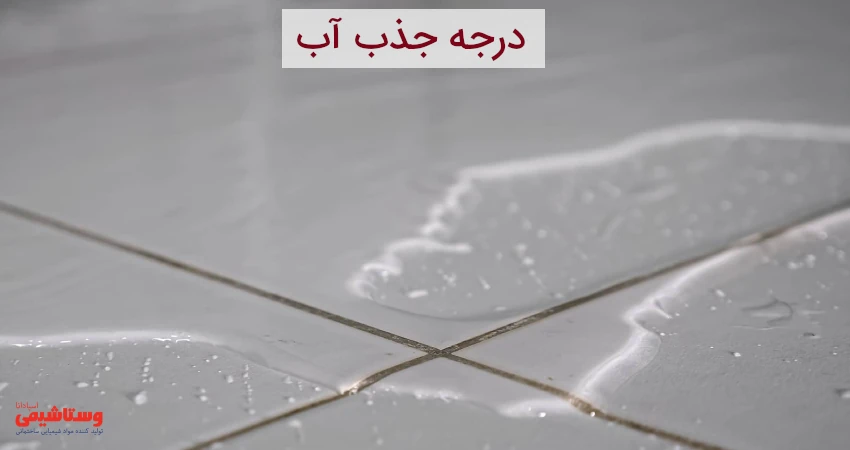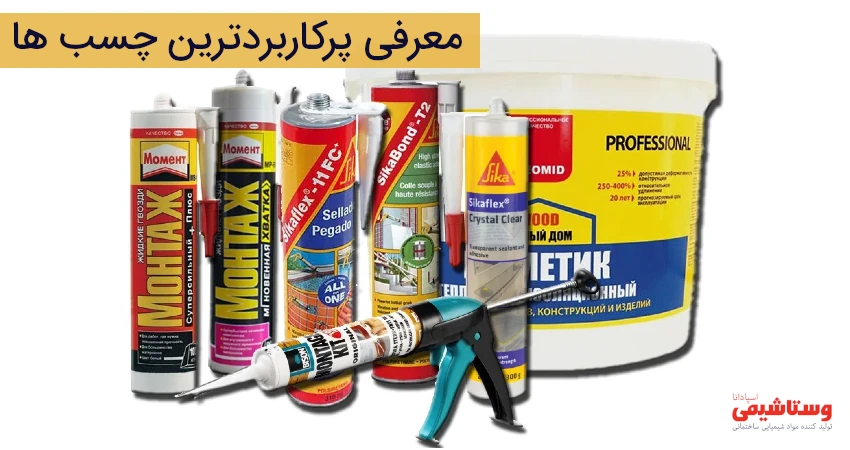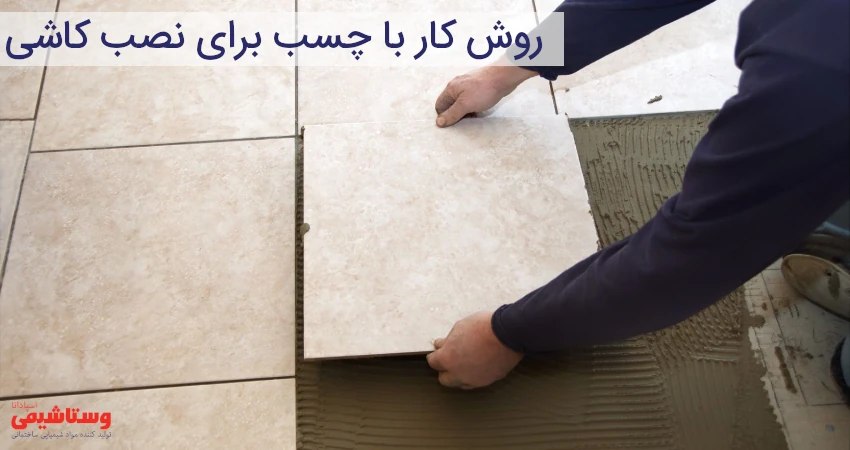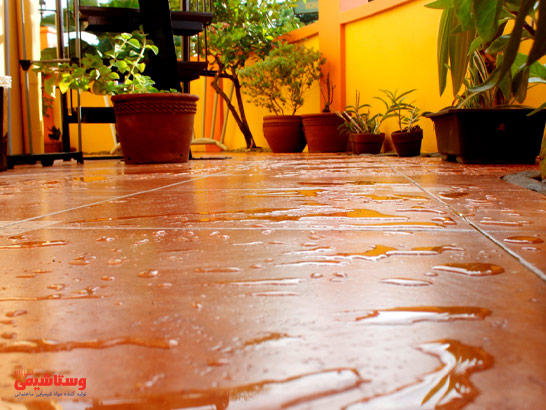rebar
Rebar planting method
Is the rebar planting method supposed to be done on cracked concrete surfaces or uncracked concrete surfaces?
This is one of the most important factors in choosing an adhesive, because many adhesives
It can only be used on uncracked concrete surfaces and they leave a good performance.
What are the current and future environmental conditions of the place strengthened by the implant method?
Is there a possibility that bolts and rebars will be subject to oxidation in the future or not?
Some adhesives will not be able to fully protect the implanted rebars and bolts in the future.
In fact, the non-influence of rebar planting glue from atmospheric and environmental factors must be a criterion in the choice of glue.
Concrete surfaces that are supposed to be drilled are then cleaned with dust and dirt
Disturbing factors caused by drilling or grinding operations are removed from it, when the operation starts
Rebar planting glue injection inside the holes are completely dry, wet or submerged in water?
Many rebar planting adhesives will not have sufficient adhesion and optimal performance against dust or moisture.
What is the purpose of planting rebar?
Is the purpose of strengthening the structural elements and
Or that the purpose of implementation is related to other public works in the building, etc.
If the goal is to strengthen building elements,
For what elements is the reinforcement plan provided by rebar or bolt planting method?
In some cases of rebar and bolt installation, there is no need to perform calculations and appropriate details.
However, performing detailed technical calculations for rebar or bolt planting
which is considered a part of the structural system is mandatory.
In the meantime, the cases of failure of restraint and rebar planting have been investigated
in concrete (under tensile, shear or combination of these loads)
and preventing the occurrence of brittle failure states, especially in the performance of a structure that
In it, the topics related to plasticity are discussed, it is very important.
At what levels do we need to implement and strengthen in the plan of strengthening an element by planting rebar or bolt?
(horizontal, flat, inclined, vertical or ceiling surfaces). Because some manufacturers of glues due to
The property of liquefaction (flowing) of some planting glue,
In this regard, they mention certain limitations in their production glue catalogs.
Disadvantages of rebar
In cases where the amount of chloride in contact with concrete increases, the entry of chloride into the concrete
It can cause the inactivation of the passive layer on the surface of the steel. according to this,
According to Tutti’s theory in 1982, the corrosion of rebar in concrete can be divided into 2 stages:
Initiation and Expansion Stages During the initiation stage, carbonation or chloride entry occurs.
As long as the depth of carbonation or the depth of the critical amount of chloride has not reached the surface of the rebars,
The passive level of the rebars is active and no destruction occurs. The destruction phase begins
that the passive layer of the rebar surface is destroyed by carbonation or chlorine.
The corrosion process will continue until reaching a certain level of damage, in which case the structure needs to be repaired.
Over time, signs of cracking and peeling appear in concrete.
This is because the rusted part has more volume than the steel before rusting.
General principles
Corrosion of rebars may be caused by carbonation, corrosive compounds such as chlorides or free currents.
A very important point in choosing the optimal repair method and materials is knowing the mechanism of corrosion.
In general, steel in healthy concrete is protected by the alkalinity of concrete with pH values higher than 13.
As long as there is a passive layer, no corrosion occurs. There are at least two major procedures, though
which can lead to the destruction of the passive layer.
Carbonation of concrete, as an example of the reaction of alkalis in the capillary pores with CO2 in the air
It leads to a decrease in the initial pH value from more than 13 to less than 9.
Frostbite and freeze-thaw aggression
The effects of frost and freezing-thawing can be prevented by using the well-known concrete technology.
However, due to various reasons (such as improper mixing, unwanted quality of execution, change in environmental conditions, etc.)
Sometimes the resistance of older structures against frost is not high enough. If frost damage is too advanced,
Mostly, the damaged surface layer should be removed and replaced by suitable mortar or concrete.
In the first stage, the implementation of the surface protection system with a significant reduction of mixing water is sufficient and leads to the creation of a secure connection to the bottom.
Physical aggression
According to the EN 1504-9 standard, physical attack can be caused by freezing-thawing,
Temperature effects of salt crystallization, shrinkage, wear and erosion occur.
These attacks sometimes lead to cracking or flaking.
In more severe cases, if there is no proper thermal protection in winter, cold invasion may cause the destruction of the entire fresh (young) concrete.

Frostbite and freeze-thaw invasion
By using the known laws of concrete technology, the effects of freezing and freezing-thawing can be avoided.
Although due to various reasons (such as inappropriate mixing, unwanted performance quality, change in environmental conditions, etc.)
Sometimes the resistance of older structures against frost is not high enough.
If frost damage is too advanced, mostly the damaged surface layer should be removed
and replaced by suitable mortar or concrete.
In the first stage, the implementation of the surface protection system with a significant reduction in water mixing, sample adequacy
and leads to the creation of a reliable link to the following.
Physical aggression
Physical attack can occur by freeze-thaw, temperature effects, salt crystallization, shrinkage, abrasion, and erosion.
These attacks sometimes lead to cracking or flaking. In more severe cases,
In case of lack of proper thermal protection in winter, cold invasion may cause the destruction of the entire fresh (young) concrete.
Biological acid attack
This attack of biological sulfuric acid usually occurs in the areas on the surface of the exhaust pipes.
Where microorganisms produce acid with high concentration. To repair this type of damage, you should know that
The acid attack has penetrated deep into the concrete.
Therefore, the top layers of concrete should be removed and reach a place where the resistance is not reduced due to contact with acid.
When the environmental conditions of the structure cannot be improved, proper and durable adhesion to the underlying layer is required.
In such cases, suitable materials for restoration must be carefully selected because they must be resistant to acid.
Biological acid attack
Biological acid attack usually occurs in sewage structures or sewage transfer pipes.
One of the most severe cases that occurs anaerobically, sulfuric acid attack
It is the result of biological activities.
Microorganisms play a very important role in this type of corrosion due to the production of sulfuric acid.
The rate of corrosion is usually extremely high and reaches about 1 cm per year.
Expansionary invasion
If the internal pressure reaches a critical level, large cracks will be formed and the unwanted phenomenon of ASR will be revealed.
Normally, a type of gel can be seen inside the cracks caused by the ASR reaction.
If the aggregates have critical amounts of sulfides such as pyrite (FeS2) or pyrrhotite (Fes), which can be oxidized,
local stumping may occur.
As long as the number of stumps is small, aggregates can be used as a repair method
It removed the problem with a drill and replaced it with a suitable mortar.
In order to reduce the risk of accidents in the future, it is possible to use a surface protection system.
It reduced the amount of water in the concrete to a non-critical level.
Expansionary invasion
Another example is the famous alkali-silica reaction.
This reaction occurs when some types of aggregates or sand are used
In concrete, they are not stable enough against alkaline environments with high pH.
In this case, amorphous silicic acid particles and derivatives in the aggregate
They react with hardened cement alkalis.
This reaction leads to the formation of bulky products and thus creates an internal pressure in the concrete.
The expansion can progress to such an extent that it causes cracks in the internal structure and as a result the strength of the concrete decreases.
Expansionary invasion
Due to the occurrence of expansion attack, reactions are carried out inside the concrete
As a result, high volume reaction products are formed.
These products are mostly insoluble. An example for this corrosion mechanism,
Sulfate intrusion into the foundation is through soils or groundwater.
In addition to sulfates, lime, magnesium oxide or magnesium salts can also lead to expansion attack.
dissolution rate
The rate of corrosion depends on the concentration and amount of acid as well as the quality of concrete.
The rate of dissolution may vary from a few millimeters or even several microns per year.
One of the signs of dissolution attack is that the concrete surface can be separated like sand by abrasion.
Acids may be mainly in the form of carbonic acid or sulfuric acid in concrete structures of chemical industries.
be present in wastewater or in certain cases in natural water.
Protection and repair of damage caused by acid dissolution requires special technical knowledge
In relation to acid-resistant systems, it includes solutions for connections and…
Liquidation invasion
An example of dissolution attack is caused by acids, where the acid dissolves the constituents of concrete.
and forms a solution with soluble products. Therefore, concrete from the same surface that has reacted with acid,
It loses its resistance.
Over a period of time, the surface is completely destroyed and the material disappears.
The concrete cover and the concrete thickness of the concrete piece are also reduced.
chemical attack
Chemical attack can be caused by various chemical agents that attack concrete
And as a result of this invasion, the dissolution and expansion of the invasion occurs.
In most cases, the adhesive part of concrete (cement part) is attacked.
But in some cases aggregates are also attacked.
Mechanical invasion
- Mechanical attack may be due to corrosion, fatigue of materials and materials.
- Overload forces, displacement such as settlement, rupture or vibration.
- Especially for pavements and roads, mechanical aggression caused by the movement of pedestrians and vehicles should
- Be considered. Also, reservoirs, waterway structures or rolling roads are exposed to physical attacks.
Concrete quality
Judgment regarding the quality of concrete should be done by considering the role of concrete in the concrete structure. The border areas of concrete are responsible for protecting the concrete against penetrating destructive factors such as chlorides, carbon dioxide and sulfates.
The core of concrete has the main responsibility in relation to the bearing capacity of structural elements.
diagnosis
An important point is that the stages presented may depend on the characteristics of the structure
Also, the type of damages, clauses should be added to it.
During initial phase evaluations, usually no visible damage is seen.
It can be decided whether protective measures to achieve the design life of the structure
Is it necessary or not? Also, if the failure related to the corrosion of the rebar is not seen,
An inspection can lead to reduced costs because the cost of required repairs and measures
Protection will be significantly less than the remedial measures required after a failure occurs.
If the evaluation is done at the same time as the immediate phase of the megalders, usually not only the future measures that lead to
to preserve the design life of the structure, but also to take immediate measures aimed at guaranteeing the load bearing capacity of the structure,
are the subject of this review. Therefore, in order to have a complete review of the structure,
It is essential to know the condition of the structure as well as the purpose of the evaluation.
Assessment
Evaluation should be done in cases such as breakdowns and damages to the structure, causes of breakdowns, and so on
The ability of the concrete structure to meet the performance expected from it.
The evaluation process should include, but not be limited to, the following:
1- The appearance of the existing concrete structure
2- Testing to determine the condition of the structure and rebars
3- Main plan approach
4- Environment, including exposure to pollution
5- History of concrete structure, including exposure to environmental pollution
6- Terms of use, for example, loading or other actions
7- The requirements for the use of the structure in the future
Corrosion mechanism of tensile steels
The quality of the grout or mortar surrounding the prestressed steel plays an important role in the risk of stress corrosion cracking
plays To detect this risk, they usually open the prestressed steels. For example
By using high-pressure water flow, after part of the mortar is opened, the density of the mortar can be seen
It is an evaluation. Usually, the mortars are well compacted, but in some cases, parts with poor compaction may also be seen.
To evaluate prestressed concrete structures, it is generally necessary to evaluate the bearing capacity. Assessment
Conditions due to the risk of cracking due to stress corrosion should only be done by experienced experts and with
Consider the special conditions of the structure. such as the type of prestressed steel, structural details,
Level of static and dynamic loads, materials used in grout or mortar, environmental conditions and cracks.
Corrosion mechanism of prestressed steels
In prestressed concrete structures, certain corrosion mechanisms may occur. such as induced cracks
From stress corrosion or hydrogen embrittlement. These corrosion mechanisms are not only related to environmental conditions,
Rather, they are affected by tensile stresses in steel. In addition, the strength of prestressed steels
Against cracks caused by stress corrosion to chemical composition and metallurgical conditions
It depends, which is again influenced by production technology.
Corrosion caused by stray currents
Stray currents always try to take short paths instead of ground using metals
obtain a conductor (such as steel bars). The area from which the current enters the metal as
Cathode protected. But the area from which the current leaves the metal and returns to the ground
It is anodically charged and prone to corrosion.
Whenever it is difficult to explain the problems of rebar corrosion in the ground and the arrival of strong sources of direct current or
Intermittent stray currents should be investigated as the cause of rebar corrosion.
However, this requires special knowledge and equipment and should only be performed by experts.
Corrosion caused by stray currents
In addition to carbonation or chloride ingress, stray currents may also cause corrosion.
This type of corrosion only happens in very exceptional cases. where electric current fields
It is active in the ground and the usual (basic) measurements are taken to prevent stray current corrosion.
They are done incorrectly or incompletely.
Typical sources for electric currents in the ground are railways or trams, electric cables and appliances
welding and electrolysis. However, to avoid the problems of stray currents, facilities
Electrics must be installed in such a way that stray currents are limited.
However, if there are high stray currents in the ground, they can cause corrosion
reinforced concrete structures in electric fields.

Corrosion of concrete caused by washing
Corrosion of the rebar may also occur from the passage of water over long periods of time from the location of the cracks
or joints arise. This leads to a regional decrease in the pH value where the alkaline ions are removed with the water.
The washing effect can be confirmed by the phenolphthalein test. If the pH value decreases, so
When corrosion starts, the color does not change to pink. But in the case of washing concrete to
Due to the decrease in pH, no color change will be visible.
Corrosion caused by chloride 2
Often it is not possible to completely remove the damaged concrete because the cross section of the column needs to
The critical load tolerance of the structure cannot be reduced much. Therefore, static predictions in phase
The repair design must be considered before any operation in the workshop. Usually reduce the level range
Cross section is possible. In any case, careful control should be done during the destruction of concrete so that the situation is under control.
However, in some cases, a temporary column must be installed to ensure safety during the restoration operation.
When concrete is directly exposed to seawater, either by chlorides in seawater or by blowing winds
Chloride, which blows from the sea, is attacked. In such a situation, in order to avoid much damage,
High quality and sufficient thickness of concrete cover is essential. Sometimes to protect additional measures such as enforcement
Covers are also used. In old structures, often the quality and thickness of the concrete cover is not enough
And problems caused by corrosion may be seen. Compared to the performance of deicing salts, chloride
The creature in the sea water constantly attacks the structure. Therefore, usually in these conditions, the amount of mobile corrosion is high.
Chloride corrosion
Corrosion of rebar caused by chloride ions in concrete usually leads to a uniform drop in the cross-sectional area of the rebar
Corrosion does not result from carbonation, but results in concentrated corrosion spots. This is because of this
It is true that hydrochloric acid (HCI) appears at anodes, leading to high corrosion rates
It is true that hydrochloric acid (HCI) appears at anodes, leading to high corrosion rates
Usually inside a concrete structure and with the connection of different layers of the rebar network between all the rebars
Steel electrical connection is established. Therefore, it can be concluded from this example that damage detection
Caused by chloride intrusion corrosion should be carefully investigated. Hence to plan the restoration
It is very important to effectively assess the damage as accurately as possible.

Mechanism of corrosion in cracks
Aggressive materials such as chlorides can penetrate into concrete directly and very quickly through cracks.
Experience has shown that the corrosion of rebar starts at a high speed and in large dimensions. especially
When deep cracks reach or cross the rebar surface. The most unwanted situation is time
that a crack extends from the inside to the entire cross section of a concrete structure.
Due to the lack of a passivation layer on the rebar at the crack site, often large macrocells with small microcells in place
Cracks and large cathodes are formed in the areas between the cracks. These macrocells lead to high corrosion rates.
Introducing our products
As you know, to buy accessories such as: tile adhesive , ceramic adhesive and porcelain adhesive; You should use your utmost care to choose the best quality. Because the poor quality of any of these products may cause irreparable damages. Vesta Chemical factory has years of experience as the basis of its products, so that it can offer the best to you dear ones. Other products that Vestashimi offers you with the best quality include: Sealing glue، Light block glue، anti-acid، Waterproofing، Nano look coating، Epoxy resin product، Roof insulation، concrete glue، Epoxy resin، strapping powder، thatch، Primer، Groot، Rebar planting paste، Epoxy glue is. Get in touch with Vestashimi for more services.






